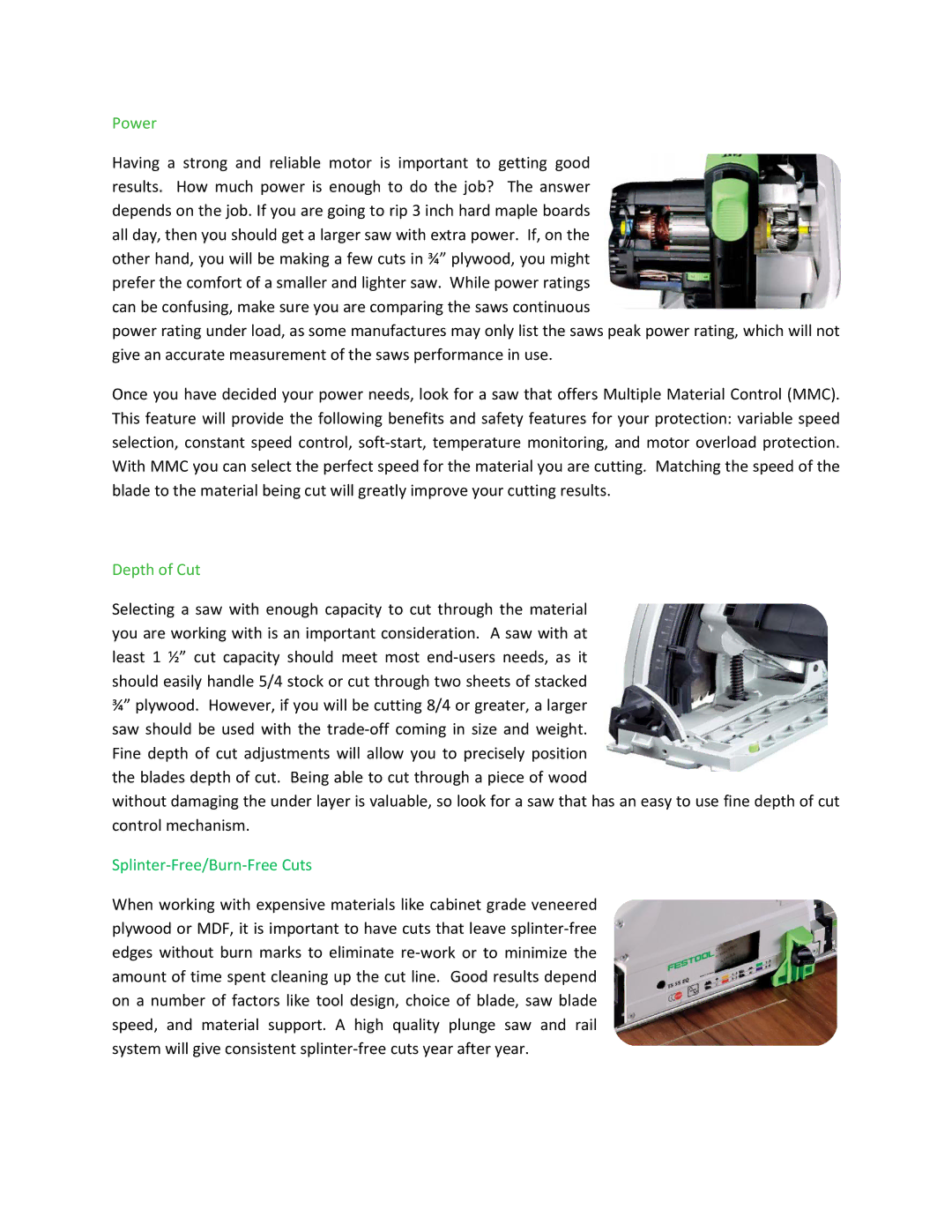
Power
Having a strong and reliable motor is important to getting good results. How much power is enough to do the job? The answer depends on the job. If you are going to rip 3 inch hard maple boards all day, then you should get a larger saw with extra power. If, on the other hand, you will be making a few cuts in ¾” plywood, you might prefer the comfort of a smaller and lighter saw. While power ratings can be confusing, make sure you are comparing the saws continuous
power rating under load, as some manufactures may only list the saws peak power rating, which will not give an accurate measurement of the saws performance in use.
Once you have decided your power needs, look for a saw that offers Multiple Material Control (MMC). This feature will provide the following benefits and safety features for your protection: variable speed selection, constant speed control, soft‐start, temperature monitoring, and motor overload protection. With MMC you can select the perfect speed for the material you are cutting. Matching the speed of the blade to the material being cut will greatly improve your cutting results.
Depth of Cut
Selecting a saw with enough capacity to cut through the material you are working with is an important consideration. A saw with at least 1 ½” cut capacity should meet most end‐users needs, as it should easily handle 5/4 stock or cut through two sheets of stacked ¾” plywood. However, if you will be cutting 8/4 or greater, a larger saw should be used with the trade‐off coming in size and weight. Fine depth of cut adjustments will allow you to precisely position the blades depth of cut. Being able to cut through a piece of wood
without damaging the under layer is valuable, so look for a saw that has an easy to use fine depth of cut control mechanism.
Splinter‐Free/Burn‐Free Cuts
When working with expensive materials like cabinet grade veneered plywood or MDF, it is important to have cuts that leave splinter‐free edges without burn marks to eliminate re‐work or to minimize the amount of time spent cleaning up the cut line. Good results depend on a number of factors like tool design, choice of blade, saw blade speed, and material support. A high quality plunge saw and rail system will give consistent splinter‐free cuts year after year.
